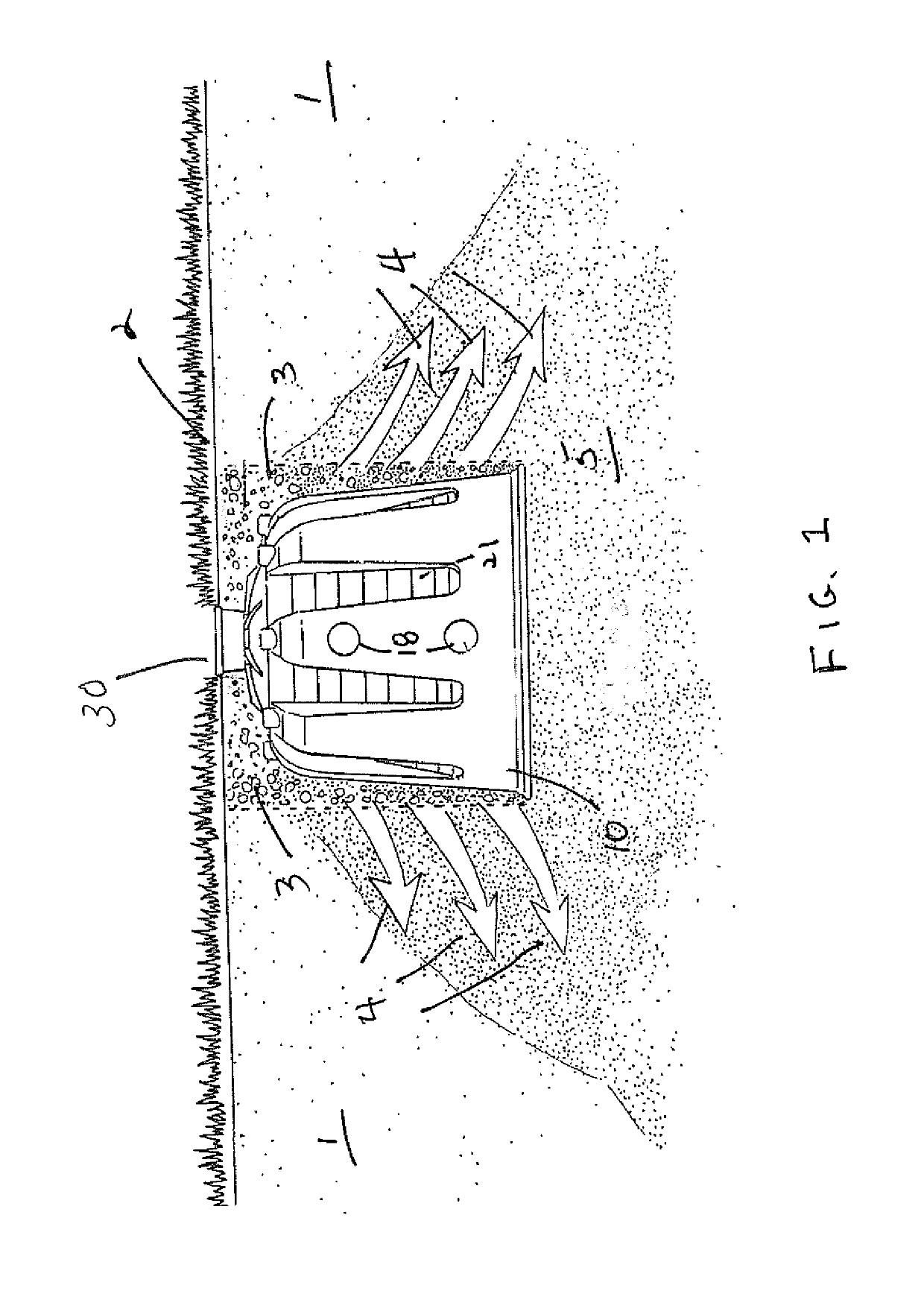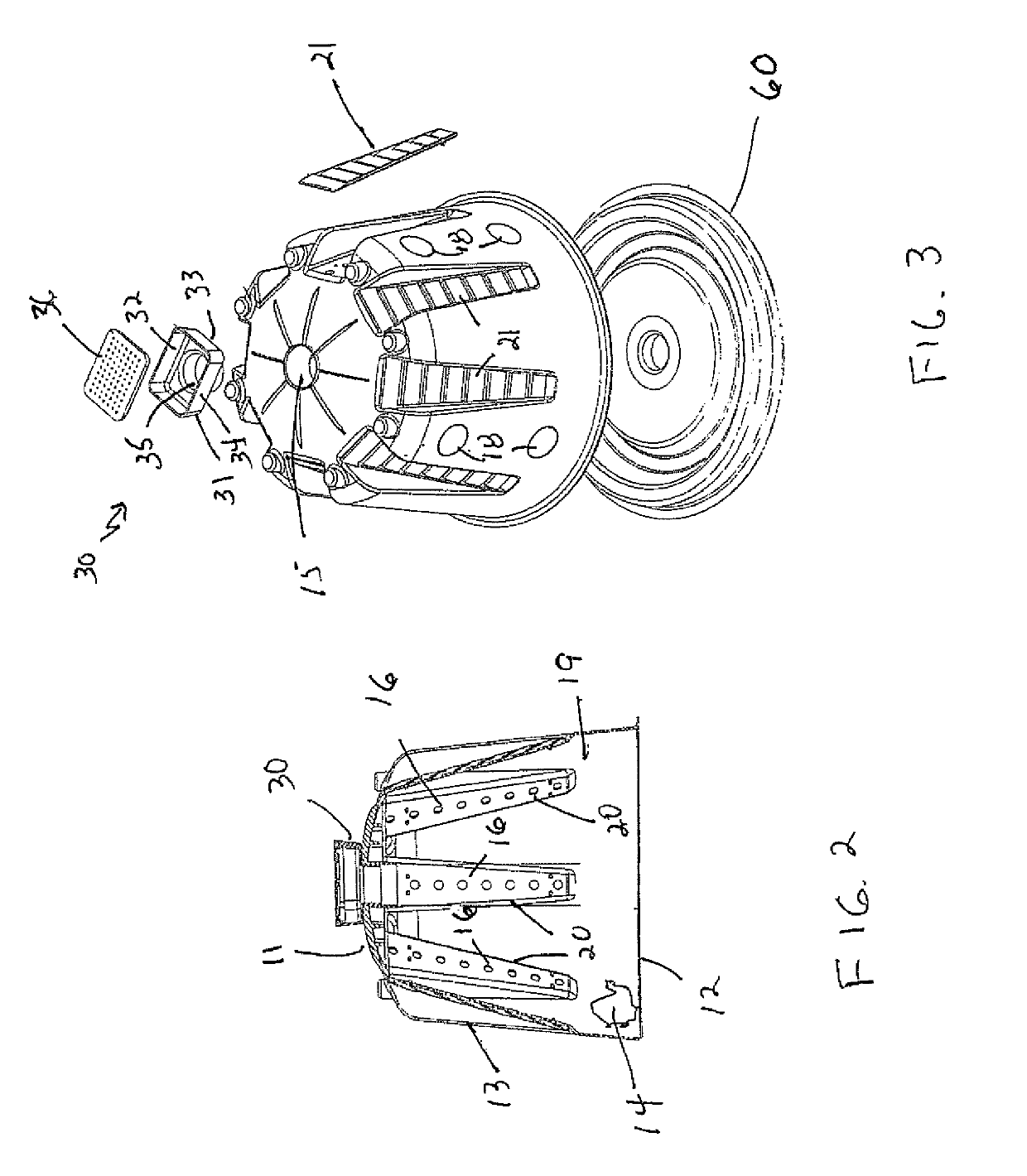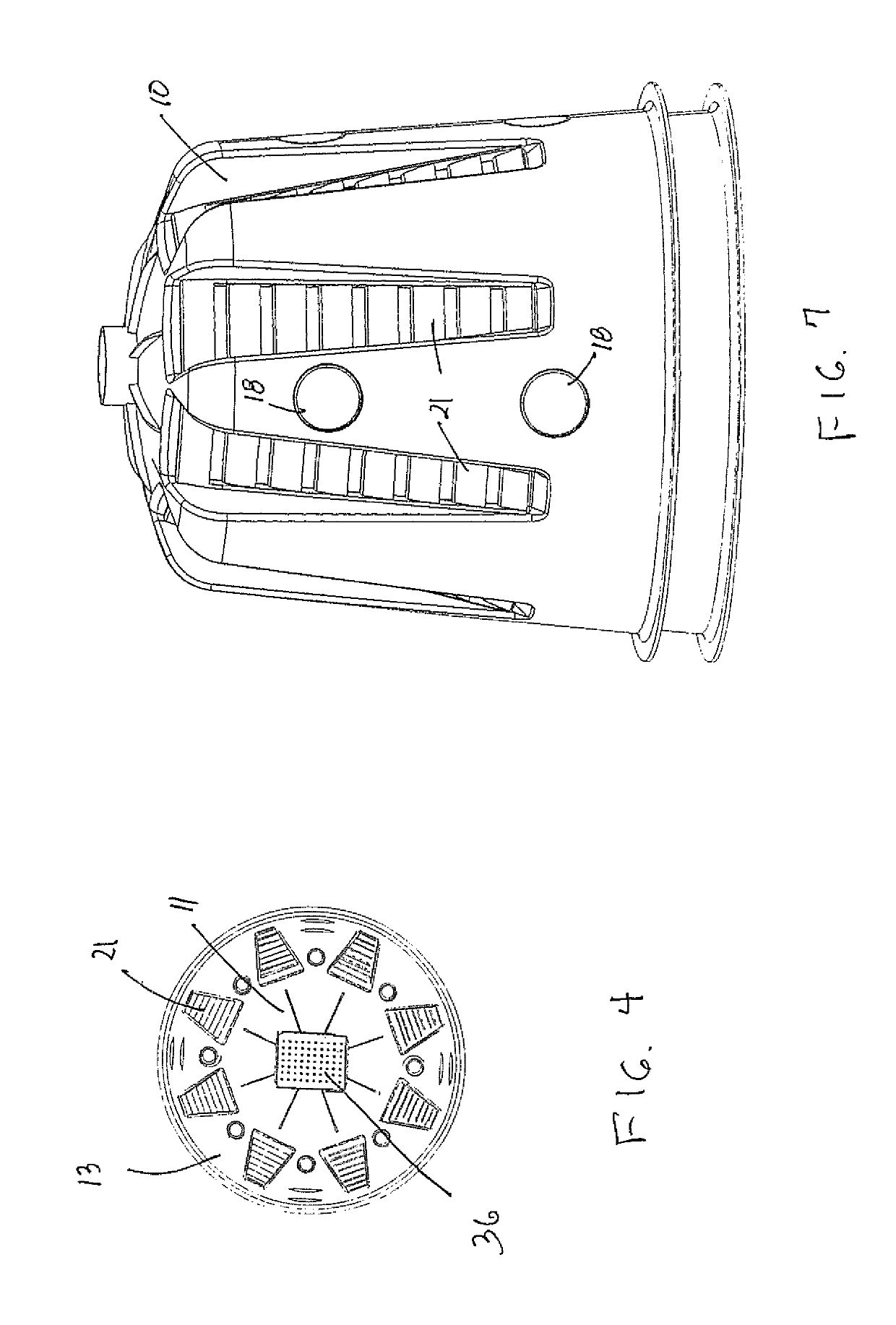Runoff water management system
a runoff water and management system technology, applied in the field of water management, can solve the problems of non-point source pollution damaging 80% of all water resources, soil erosion, plant damage, etc., and achieve the effects of reducing soil saturation, increasing the size of the overall plume, and increasing lateral distribution
- Summary
- Abstract
- Description
- Claims
- Application Information
AI Technical Summary
Benefits of technology
Problems solved by technology
Method used
Image
Examples
Embodiment Construction
[0029]Referring to the drawings in detail and in particularly FIGS. 1-7 wherein like elements are indicated by like numerals, there is shown a drywell 10 constructed according to the principles of the present invention. The drywall 10 may have various shapes, but in this embodiment has a generally cylindrical or bell-like shape, with a top 11, an open bottom 12, and a sidewall 13 interconnecting the drywell top and bottom. The drywell top, bottom and sidewall define a drywell interior 14. The drywell top 11 has a large diameter, central, top port 15, opening into the drywell interior. The top port 15 is adapted to receive a collector assembly 30, acting as a surface drain. Optionally, the top port 15 may be connected to a pipe feeding surface water from another source. The drywell sidewall 13 has a plurality of smaller diameter drain-type ports 16 generally uniformly distributed about the cylindrical wall surface. The drywell bottom 12 is open. A removable base cover 60 may be provi...
PUM
 Login to View More
Login to View More Abstract
Description
Claims
Application Information
 Login to View More
Login to View More - R&D
- Intellectual Property
- Life Sciences
- Materials
- Tech Scout
- Unparalleled Data Quality
- Higher Quality Content
- 60% Fewer Hallucinations
Browse by: Latest US Patents, China's latest patents, Technical Efficacy Thesaurus, Application Domain, Technology Topic, Popular Technical Reports.
© 2025 PatSnap. All rights reserved.Legal|Privacy policy|Modern Slavery Act Transparency Statement|Sitemap|About US| Contact US: help@patsnap.com



